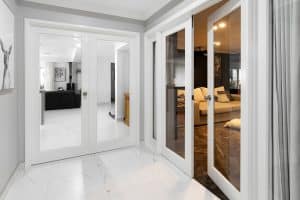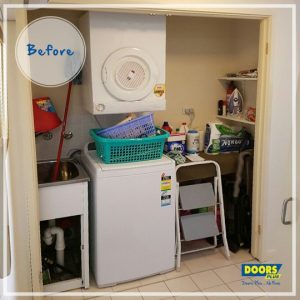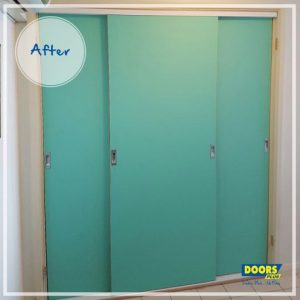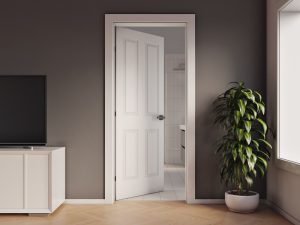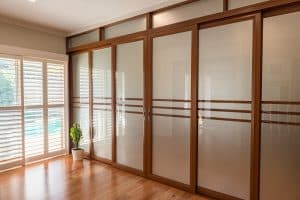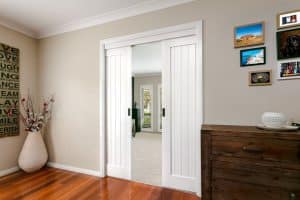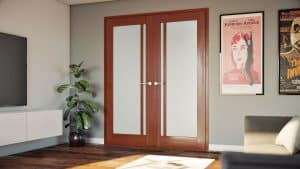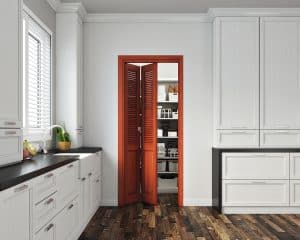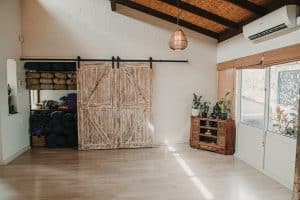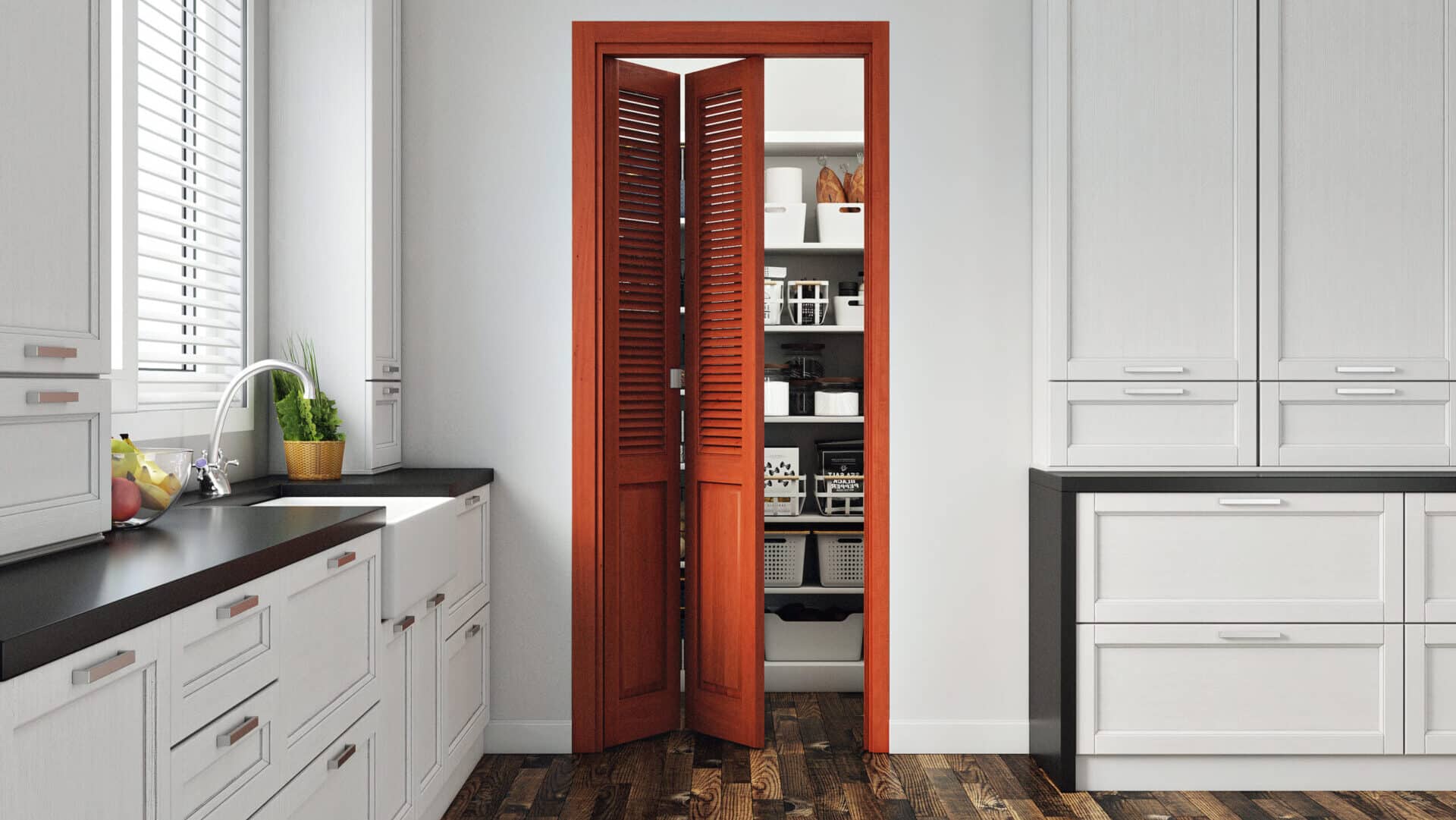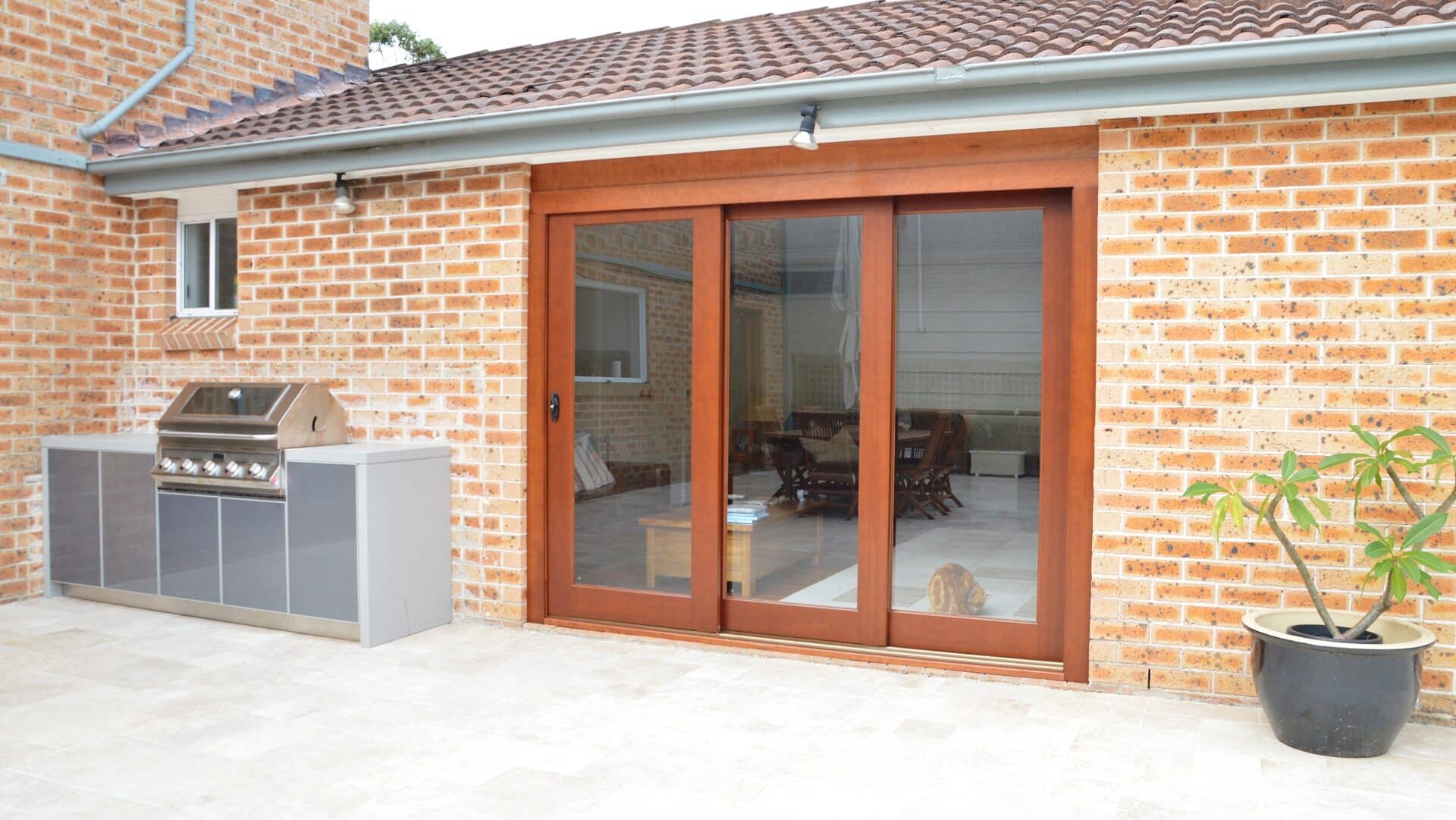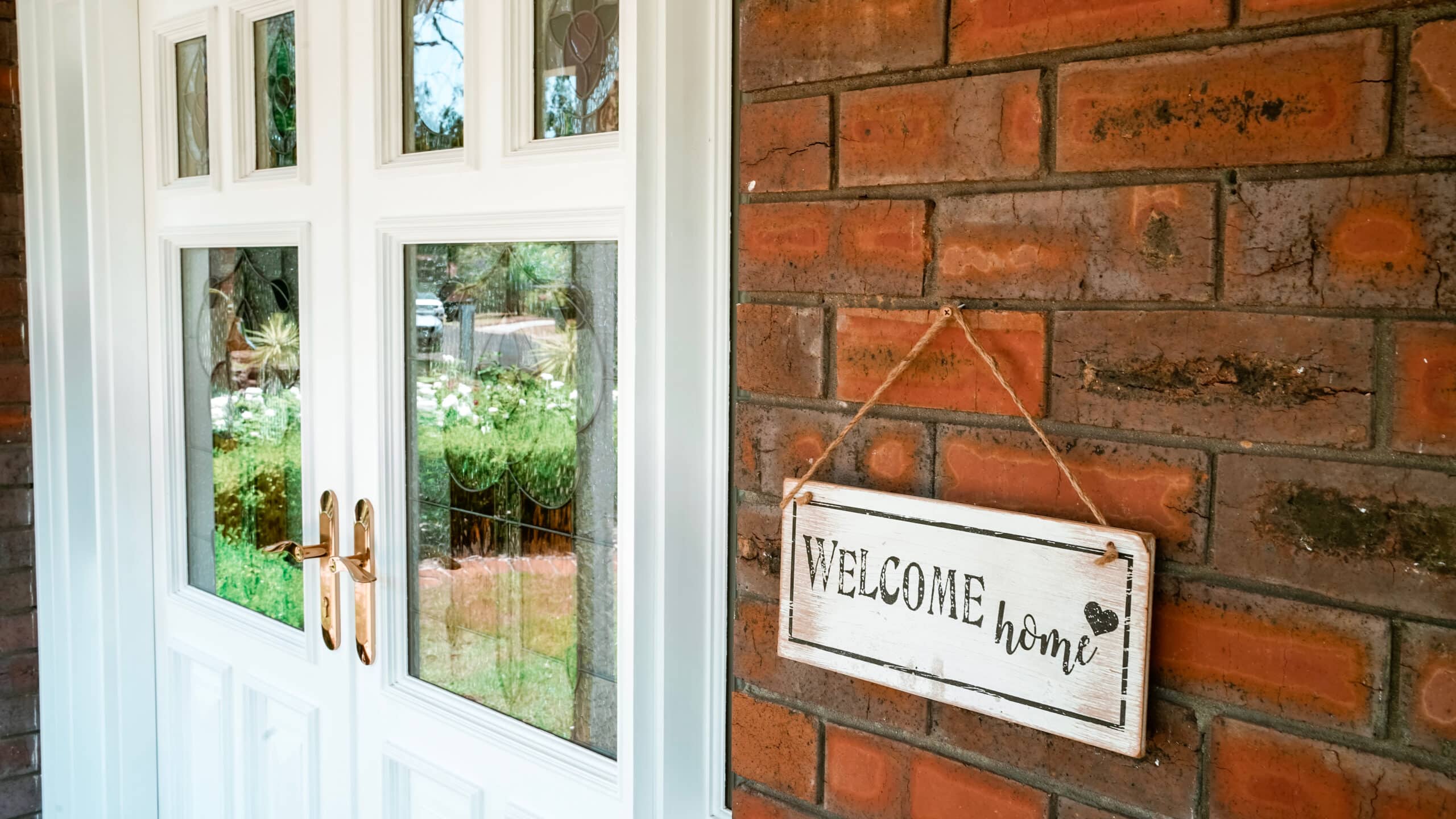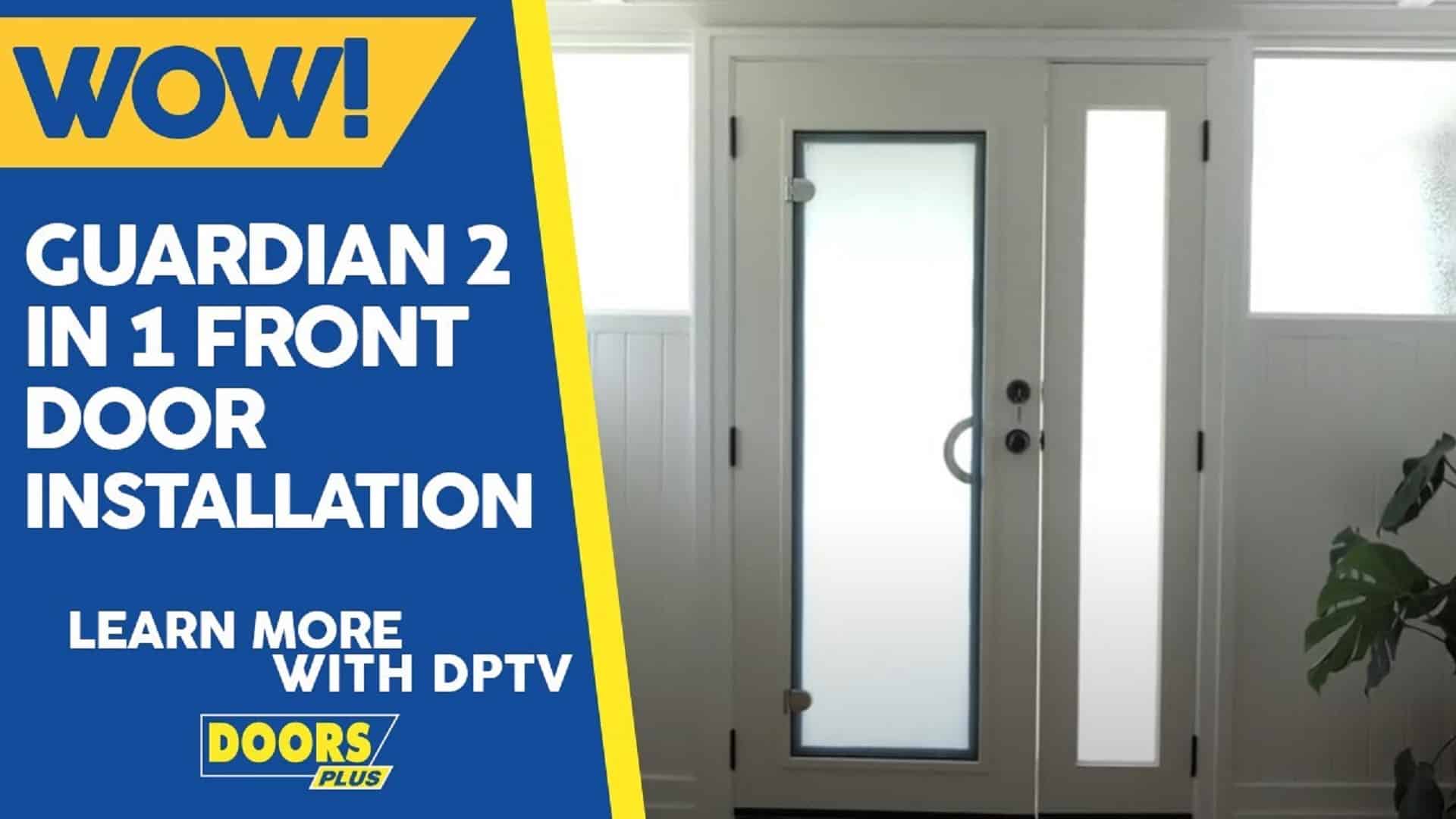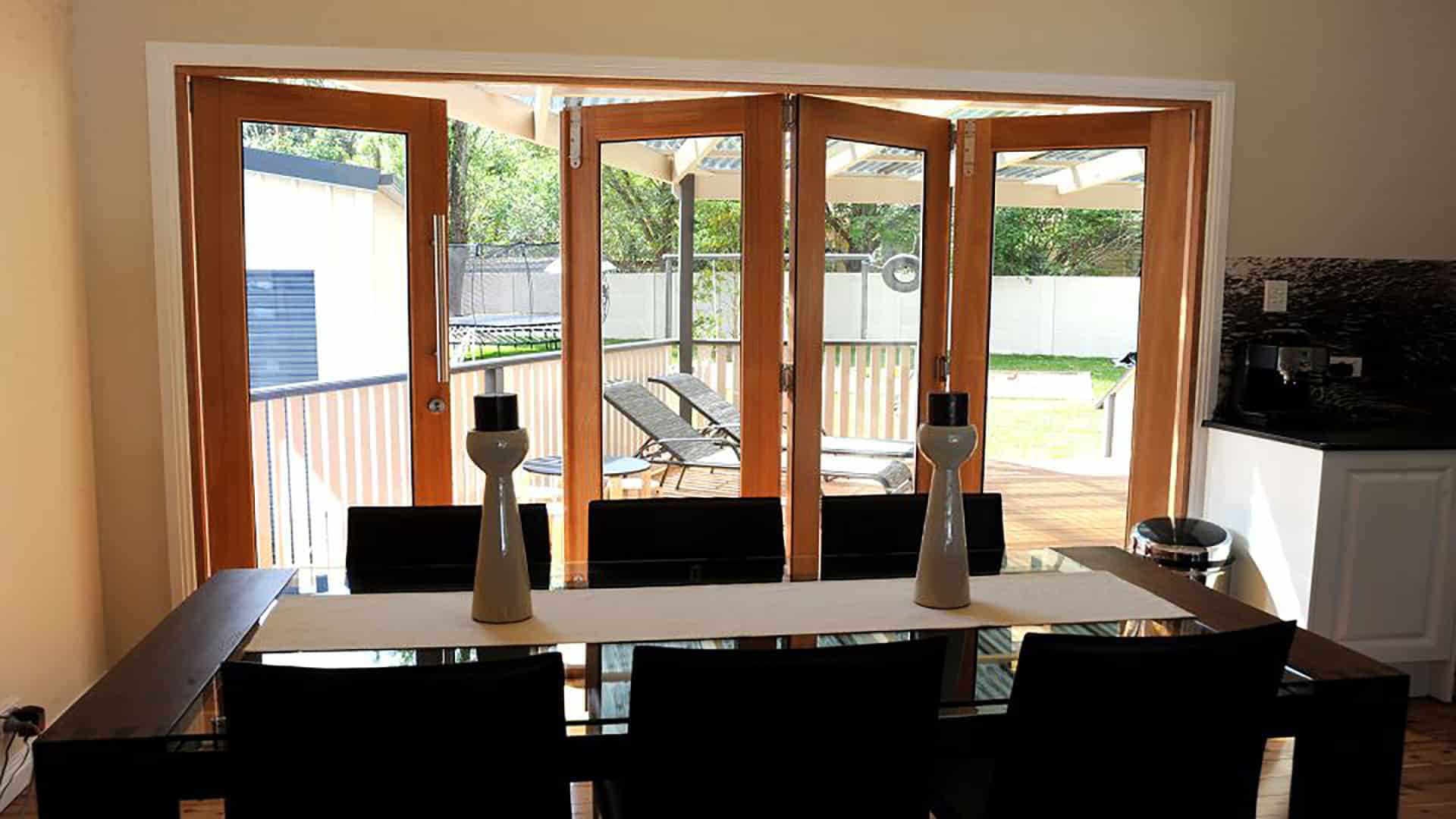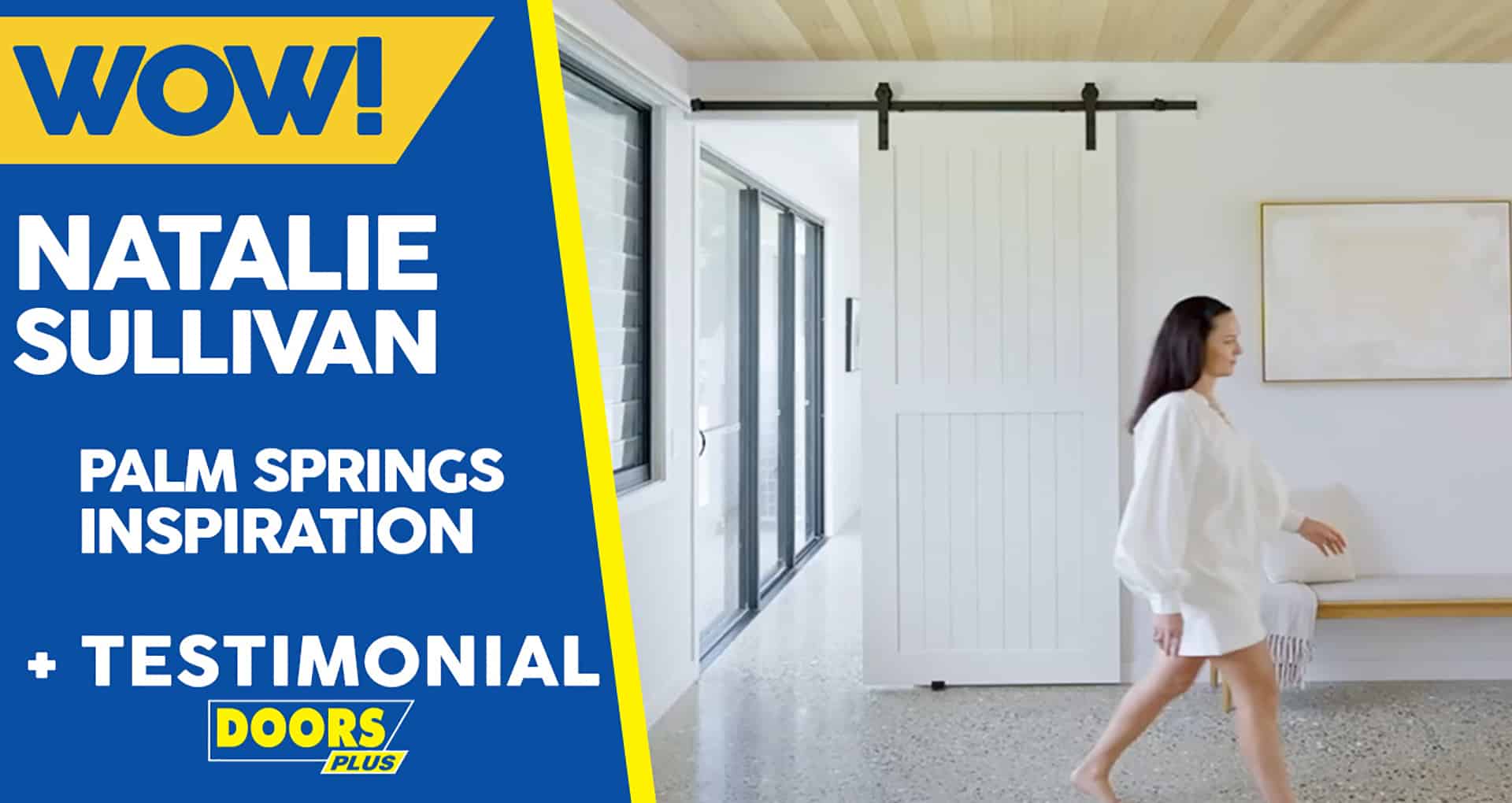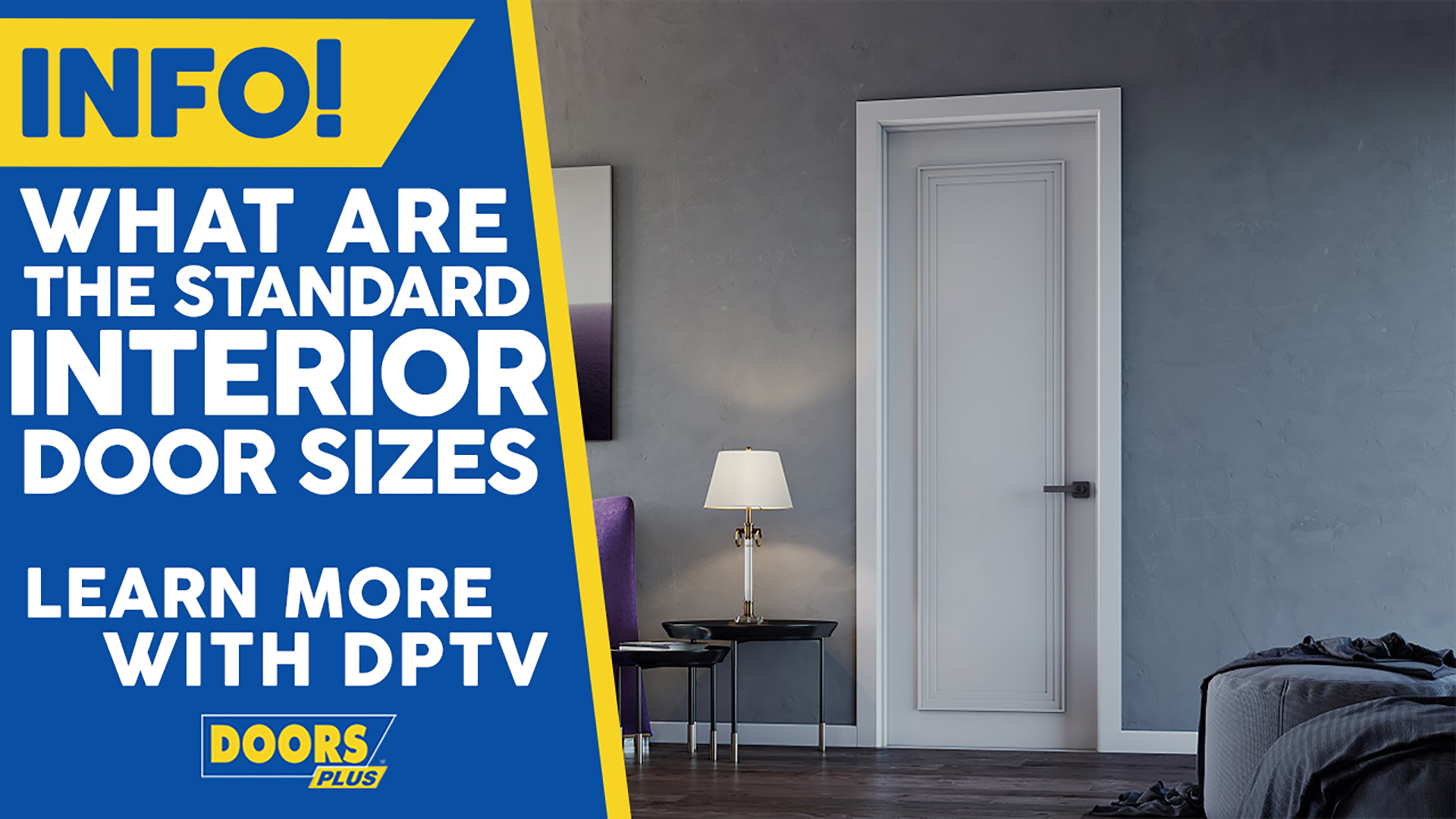9 Types Of Internal Doors To Choose For Your Home
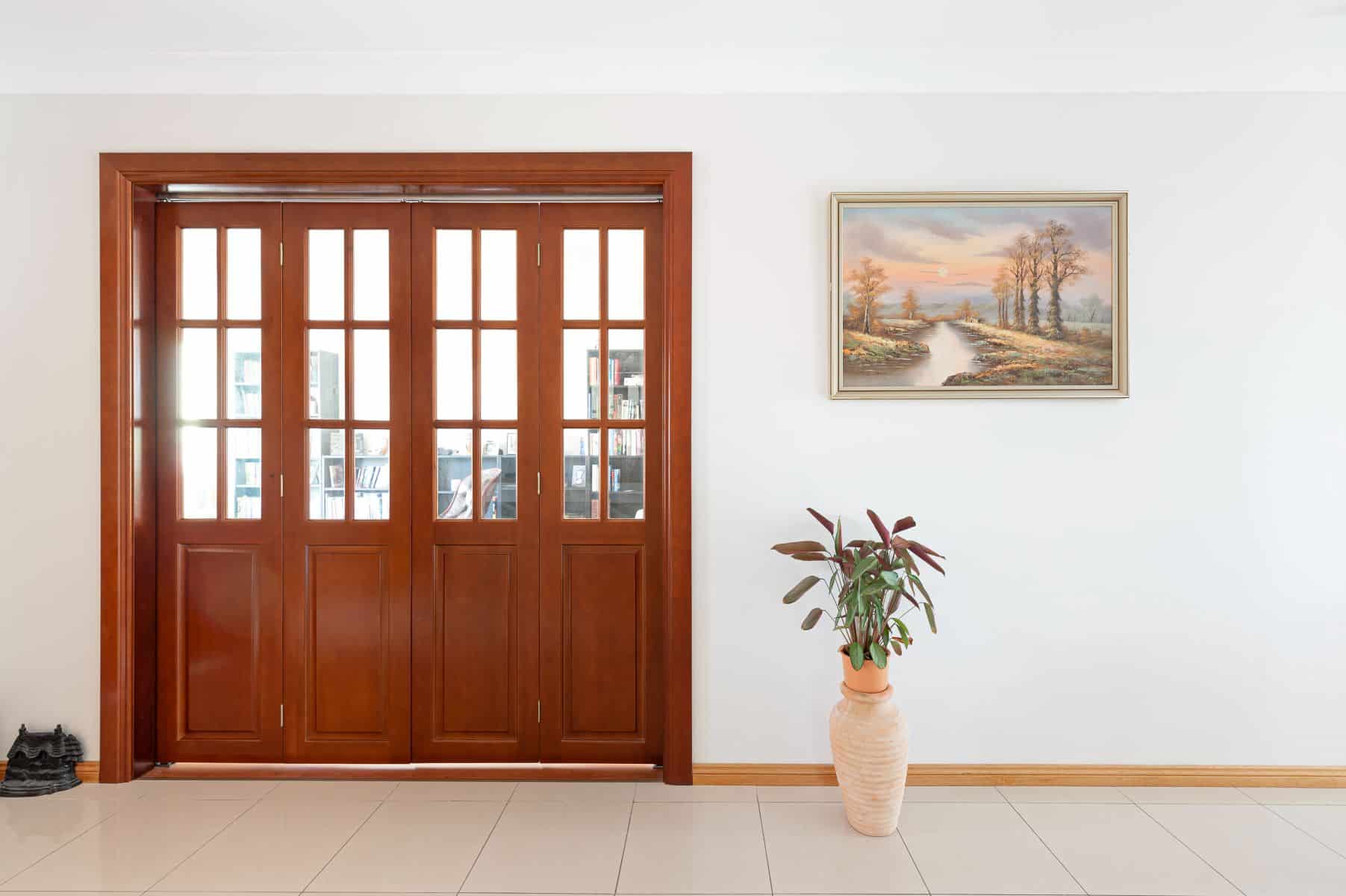
Whether you’re just replacing one or two doors to refresh your home, or embarking on a full renovation, your choice of internal doors could make or break your home improvement project.
No pressure!
These days, there is a huge choice of styles, materials and configurations on offer and it all comes down to what you want and need from your doors.
You can choose doors that stand out or doors that blend in, doors that swing, fold or slide, doors that open up your living space, or doors that keep the noise out.
Whatever your priorities, it pays to know your options and weigh up the benefits so that you can find the right doors to complete your home transformation.
Types of Interior Doors
Different types of internal doors are suited to different rooms and functions, and each offer their own benefits.
Flush doors are budget-friendly and understated, while French doors inject style and natural light.
Pocket doors conveniently hide away when open, while barn doors are made to be seen and admired.
It’s important to know what’s out there, and to understand the differences between them, so that you make the right choice for your space, your needs and your budget.
9 Internal Door Styles:
1. Flush Doors
2. Panel Doors
3. French Doors
4. Glass Doors
5. Pocket Doors
6. Double doors
7. Bi-fold Doors
8. Sliding Doors
9. Barn Doors
1. Flush Doors
The most popular types of internal doors in Australian homes are classic hinged doors.
Flush doors are a type of hinged door with a simple, flat surface – no paneling or moulding.
If you’re looking for cheap internal doors that fit right in, these are a versatile and economical option that can work in any room and any home.
Flush doors are generally lightweight hollow core and can be painted to suit your home style.
What are the benefits of flush doors?
Pros:
• Cost-effective
• Versatile style
• Material and finish options
• Consistency throughout the home
• Strong and durable
Cons:
• Less design interest than panel doors
• Require space for a hinged door to swing into the room
• No light flow
Which is the best room for a flush door?
Flush doors are so understated and versatile that they work throughout the home and can subtly complement your decor in any room.
They can be Lightweight and affordable or Strong and robust, depending on the construction.
They can stand up to everyday use around the family home, and the MDF or honeycomb core options both offer good value.
Best rooms for flush doors:
• Kitchen
• Laundry
• Living-room
• Dining-room
• Home office
• Bedroom
• Bathroom
How much does it cost?
For simple, budget-friendly internal doors, flush doors are your best bet, but the cost depends on the materials you choose and the specifications of your space.
For example, hollow internal doors cost less than MDF solid cores.
For the best price on flush doors, speak to a Doors Plus consultant at your nearest showroom.
2. Panel Doors
Panel doors are usually hinged doors that have been divided into vertical or horizontal panels to add design interest.
Shallow or deep routing can be used to create a wide range of different designs, whether you want a traditional or a contemporary look.
You can even include glass or mirrored panels, for added visual appeal and light flow.
The stile and rail construction of these moulded internal doors helps to reinforce the timber against warping, swelling or shrinking.
What are the benefits of panel doors?
Pros:
• Design interest and appeal
• Traditional or contemporary
• Great choice of materials, styles and designs
• Robust and resilient construction
• Incorporate glass for light flow, or mirrors for style and convenience
Cons:
• Require space for a hinged door to swing into the room
Which is the best room for a panel door?
These moulded internal doors are a popular choice for use in any room.
They balance style with functionality and can easily be finished to suit your decor.
They also have the resilience and staying power to put up with frequent use in high traffic areas of the home.
Best rooms for panel doors:
• Kitchen
• Living-room
• Dining-room
• Home office
• Bedroom
• Bathroom
How much does it cost?
The cost of panel doors will depend on the material and style you choose, and whether you want to include glass or mirrored panels.
The size and configuration of your opening is a key factor, and if you need new framework this will add to the cost.
For the best price on panel doors, speak to a Doors Plus consultant at your nearest showroom.
3. French Doors
French doors are usually a set of double doors that incorporate panes of glass from top to bottom, or for most of their height.
A popular choice to achieve the hamptons style, French doors can also be used to connect internal living areas, without blocking out the light.
You can choose full glass doors, with a timber frame, or multiple smaller panes for that classic, continental charm.
What are the benefits of French doors?
Pros:
• Classic and stylish
• Maximum light flow between rooms
• Reinforced glass for safety and insulation
• Keep an open plan feel, even when doors are closed
• Choice of designs for both traditional and contemporary
Cons:
• Less privacy than solid doors
• More maintenance required in terms of cleaning
Which is the best room for a French door?
French doors are a great choice for family living areas and dining-rooms as you don’t lose the light and airy open plan feel when the doors are closed.
For the home office room, they allow you to close the door on the rest of the home while still keeping one eye on what’s going on.
Best rooms for French doors:
• Living-room
• Dining-room
• Kitchen
• Pantry
• Home office
• Home theatre
How much does it cost?
The cost of French doors depends on the size and configuration of your opening, as well as the particular design you choose.
Material choice also makes a difference as there are choices across wood, MDF & aluminium.
For the best price on internal french doors, speak to a Doors Plus consultant at your nearest showroom.
4. Glass Doors
Glass can be incorporated into many different types of internal doors, alongside timber, aluminium or economical composite doors.
They can be hinged, sliding, folding or stacking and are ideal for maximising light flow between rooms.
Depending on where your glass doors are in the home, and whether you want to prioritise light, privacy or style, you can choose clear, frosted or decorative options.
You can even choose mirrored panels for bedrooms and bathrooms.
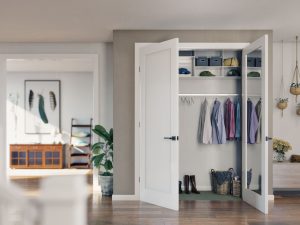
What are the benefits of glass doors?
Pros:
• Maximum light flow between rooms
• Reinforced glass for safety and insulation
• Keep an open plan feel, even when doors are closed
• Choice of designs for both traditional and contemporary
• Wide range of glass and mirror options
• Versatile for style and configuration
Cons:
• Less privacy than solid doors
• Reduced insulation
• More maintenance required in terms of cleaning
Which is the best room for a glass door?
Glass doors are ideal for dividing up open plan living spaces, without losing the flow of light.
Your rooms still feel connected, but you can close the doors for more privacy or separation between “zones”.
For bathrooms or bedroom wardrobes, mirrored panels offer uplifting style and practical convenience.
Best rooms for glass doors:
• Living-room
• Dining-room
• Kitchen
• Pantry
• Home office
• Home theatre
• Bedroom
• Bathroom
How much does it cost?
The cost of glass doors depends on the size and configuration of your opening, as well as the particular design you choose.
Multiple panels of folding, sliding or stacking glass doors for an extra wide opening will be more expensive than single or double hinged doors.
The cost will also depend on the other materials you choose, with composite being the most economical.
5. Pocket Doors
Pocket doors, or cavity wall doors, are installed on a track and slide into a cavity in the wall when open.
This is an excellent space-saving solution in areas of the home where a swinging door would be impractical.
It also means that the sliding door doesn’t have to sit against the wall and take up space when open.
Pocket doors can be single or double, and they come in a range of materials and finish options to suit different home styles.
What are the benefits of pocket doors?
Pros:
• Convenient and space-saving
• Invisible and tucked away when left open
• Choice of materials and styles
• Single or double
Cons:
• More about practicality than style as the door is very often hidden away
Which is the best room for a pocket door?
Pocket doors are ideally suited to tight spaces, such as en suite bathrooms, pantries and laundries, as they tuck away completely when open and give you more room for manoeuvre.
Best rooms for pocket doors:
• Pantry
• Laundry
• Bathroom
• Home office
How much does it cost?
The cost of pocket doors depends on the materials and configuration.
Composite doors are the cheapest option, but if you choose timber or glass this will increase the cost.
Double doors will be more costly than a single sliding door, and it also depends how much work needs to be done to prepare the wall cavity.
6. Double Doors
A set of double doors can be a great way of adding some grandeur to your home style, as well as keeping an open feel and flow between living areas when open.
Double doors can be hinged or sliding, and they open in the middle to give you access to a wide entranceway.
You can choose to open both doors together, or have one door fixed while the other opens.
What are the benefits of double doors?
Pros:
• A grand style statement
• Ideal for larger openings
• Keeps the feel of open plan, with the flexibility of closing off rooms
• Versatile designs to complement both traditional and contemporary homes
• A wide choice of materials
• Double glass doors encourage light flow
Cons:
• Encroach on floor space when open
Which is the best room for double doors?
Double doors can be a majestic addition to a dining-room, and also work well as connecting doors between large, open living areas.
They can create a grand and welcoming entrance to a master bedroom, or even a home theatre.
Best rooms for double doors:
• Dining-room
• Living-room
• Bedroom
• Home theatre
How much do they cost?
The cost will depend on the specific doors and materials you choose, with composite being the most economical option.
The condition of the existing framework will also be a factor.
7. Bi-Fold Doors
Bi-fold doors are hinged in the centre so that the panels concertina together and slide to one side to open.
One or more sets of bi-folds can be combined, depending on the width of the opening.
This is a convenient solution for smaller rooms and restricted spaces, but bi-fold doors can also be used as wall-to-wall room dividers to zone off smaller living areas within an open plan space.
What are the benefits of bi-fold doors?
Pros:
• Convenient, space-saving design
• Wide choice of materials, styles and finishes
• Can complement traditional or contemporary decor
• Multiple sets can be combined for wider openings
• Potential for zoning off areas for flexible living
• Can incorporate glass to increase light flow
Cons:
• Multiple sets can be bulky when folded
• Can be hard to clean
Which is the best room for bi-fold doors?
Typically, bi-fold doors make an excellent solution for smaller rooms and tight spaces, such as kitchen pantries or en suite bathrooms, but they are also becoming increasingly popular as sleek and stylish room dividers.
Best rooms for bi-fold doors:
• Pantry
• Laundry
• Bathroom
• Bedroom wardrobe
How much do they cost?
The cost of bi-fold doors can vary greatly, depending on the materials you choose and how many sets of doors you need to combine to fit your space.
8. Sliding Doors
Sliding doors are hung on a track so that they can slide to one side to open.
Usually, the doors slide along the wall and sit flush, leaving the opening accessible.
These types of internal doors can be single or double, with double sliding doors opening in the centre.
Many people choose sliding doors as a practical, space-saving solution, because they don’t swing into the room when open, but they can also be a stylish feature in their own right.
What are the benefits of sliding doors?
Pros:
• Practical and space-saving for smaller rooms
• Suitable for extra wide openings
• Choice of materials, styles and finishes
• Can incorporate glass to increase light flow
• Can be used as room dividers, for flexible open plan living
Cons:
• Can require more regular cleaning due to fingerprints from sliding
Which is the best room for sliding doors?
Sliding doors are a convenient solution in areas where a hinged door would be impractical, such as small laundry rooms, but they are also well suited to wardrobes and extra wide openings.
Double sliding doors are a popular choice as room dividers, with the flexibility to maintain an open plan feel and a sociable space when it suits you.
Best rooms for sliding doors:
• Pantry
• Laundry
• Bathroom
• Bedroom wardrobe
• Home office
How much do they cost?
The cost of sliding doors depends on whether you have chosen engineered timber construction, aluminium, glass or composite, as well as the size and configuration of the opening.
Sliding doors can be single, double, or made to measure.
9. Barn Doors
It is becoming increasingly popular among Australian homeowners to install sliding doors in the stunning barn door style.
These solid wood construction doors come in a range of paneled designs, from the traditional to the contemporary, and are installed on exposed barn tracks.
Available as single or double barn doors, they slide smoothly along the wall to open.
What are the benefits of barn doors?
Pros:
• A stunning style statement
• Choice of designs, finishes and hardware
• Exposed tracking systems complete the visual impact
• Can be elegant and traditional, or striking and contemporary
• Create a flow between rooms when open
Cons:
• Solid timber barn doors can be costly
• Heavy doors must be installed with appropriate hardware
Which is the best room for barn doors?
Wherever you put them, barn doors are their own design feature.
They can create a majestic entrance to a bedroom, or set the tone for an elegant dinner party.
They also work well as wardrobe doors, turning your storage into a visual masterpiece.
Best rooms for barn doors:
• Dining-room
• Living-room
• Bedroom
• Bathroom
• Home office
• Home theatre
How much do they cost?
Solid timber barn doors are a premium addition to any home.
The final cost will depend on the numbers of doors you choose, the height and width of your opening, and how much preparation is required.
Internal Door FAQs
What is the most common interior door style?
The most common types of internal doors are hinged flush or panel doors.
These work throughout the home and can be finished to complement any taste or decor.
There are plenty of cost-effective options when it comes to flush and panel doors, including fully finished composite doors, and they can create a subtle sense of consistency from room to room.
Can you mix door styles in a home?
There are so many options for internal door styles that you don’t have to feel restricted to just one type of door.
In certain areas of your home it may be practical to choose a bi-fold or pocket door, rather than a hinged door, for example.
You may also want to create feature barn doors in the master bedroom or dining area, and these will stand out because of their distinctive style.
Different types of doors are suited to different spaces, so when you’re choosing your doors it’s important to think about what your priorities are for that room or entryway: privacy, insulation, light flow, or style, for example.
What type of doors are most expensive?
The cost of internal doors varies greatly, from single hollow internal doors to double glass doors or sliding barn doors as a standout feature.
The materials you choose and the size of the opening are key factors in how much your internal doors will cost.
You can find out more about internal door sizes here.
Double doors, or multiple sets of bi-folds, are more expensive than single doors, and glass doors tend to be more expensive than solid doors.
It’s important to get a full quote up front, once you’ve chosen your doors and your space has been measured and assessed.
How are doors classified?
Doors can be classified by function (hinged, bi-fold, sliding…), by material and construction (engineered timber, glass, composite, hollow core…), by style (French, barn, traditional, contemporary…), or by area of the home (kitchen, bedroom, bathroom…).
You will need to weigh up the practical functionality and performance of your doors, as well as the look you want to achieve.
Which type of doors are best for my home?
There is no single answer to this. When choosing doors for your home, you need to think about where the doors are going and what function they’re performing, as well as your personal tastes and your budget.
You may want to choose doors that are in-keeping with your home style, whether that’s traditional or modern, and you also need to consider your priorities in terms of functionality.
If you want to maximise light flow, for example, glass doors are a good choice, but if you’re looking for privacy and sound insulation for a home office or bedroom, you may want to go for engineered timber doors.
The best way to find the right doors for your home and budget is to visit your local showroom and browse the different types of doors in person.
How do I choose an internal door?
The key things to think about when choosing an internal door are:
– Function
– Style
– Budget
You will then need to look at how to install internal doors and decide whether you want to hang it yourself or get a professional in.
If sound and thermal insulation are a priority, for example in a bedroom or home office, you can also find out how to insulate internal doors.
The best internal doors for your home are ones that meet your particular needs, suit your style and fit your renovation budget.
Having said that, there are a huge number of options to choose from and it can feel overwhelming.
If you’d like advice on buying internal doors, visit your local Doors Plus showroom for a one-to-one consultation.
We can walk you through your options, right there in store, and help you find the right fit for your space, your home and your family.

